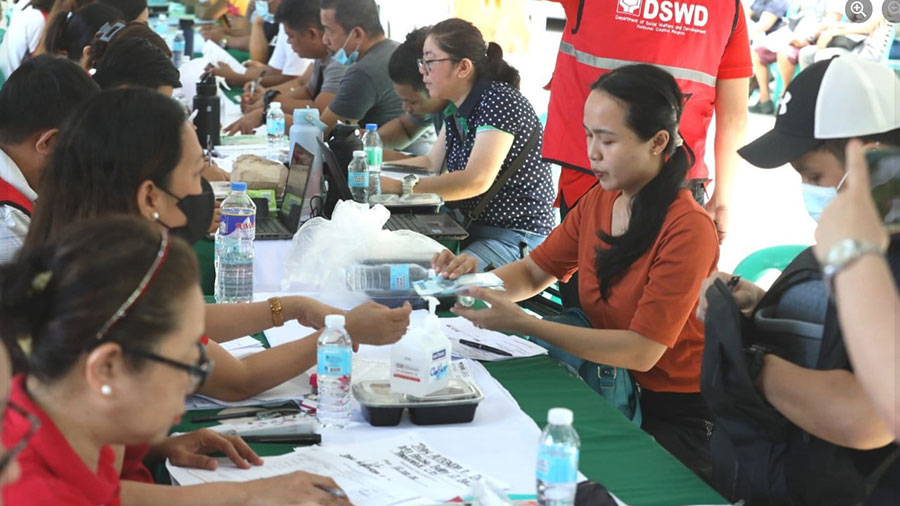The Department of Trade and Industry (DTI) yesterday said government will review in two weeks whether or not the price ceilings on rice should be lifted following the assurance of the availability of 2 million metric tons (MMT) of rice supply this month.
DTI Secretary Alfredo Pascual and the rest of the economic team also yesterday expressed full support to the price caps imposed through Executive Order (EO) 39.
The assurance comes days after Finance Secretary Benjamin Diokno was quoted as saying the team, which he chairs, was not consulted on the move.
Speaking to reporters yesterday, Pascual assured there is enough supply of the regular milled and well-milled rice whose prices have been capped at P41 per kilogram (kg) and P45 per kg, respectively, until the end of October with total harvest of 5 MMT expected to come.
He said the Department of Agriculture (DA) has assured there is enough supply of the grain till the end of the year.
Pascual also said according to estimates, if palay is bought at P32 per kg, there is enough margin to continue selling at P41 and P45 per kg, after milling and logistics, even after the caps are lifted.
“Based on our monitoring, a big percentage (of retailers) follow price caps… about 95 percent,” said Pascual, adding some retailers which did not comply have been issued warnings.
Pascual said the price caps are not a stand alone relief and that the government is undertaking parallel steps to address hoarding, smuggling and cartelization in cooperation with the Philippine Competition Commission, the Department of Justice, the National Bureau of Investigation and the Bureau of Customs.
“These parallel anticompetitive actions are all meant to make sure supply is taken care of,” Pascual said.
Diokno in a statement said EO No. 39 was issued by the President as the chief executive and the concurrent DA secretary and “ serves as a lifeline, extending much-needed relief to Filipinos grappling with the high rice prices.”
Diokno said the economic team views EO 39 as an essential stop-gap measure, and underscored the importance of supplementing it with additional measures to achieve long-term rice price stability in the country.
“We agree with the President that implementing a price cap on rice is the most prudent course of action at the moment to achieve two critical objectives: stabilizing rice prices and extending immediate support to our fellow countrymen,” he added.
Last Friday, Diokno admitted the issuance of the order came as a surprise to him, as well as to National Economic and Development Authority (NEDA) secretary Arsenio Balisacan, as the announcement was made while the economic team was overseas discussing Philippine investment opportunities to the Japanese government and potential investors.
Diokno, however, noted EO No. 39 can be proven effective in the near-term, but should not persist for an extended period.
Conditions on price caps
Secretary Amenah Pangandaman in a statement said the imposition of price caps will effectively serve as an “active stop gap” to address the market’s current circumstances.
“Conditions truly warrant a special mitigating measure,” Pangandaman said as she enumerated certain conditions that entail some form of regulated price caps: emergency situation during natural disasters or other emergencies; temporary measures to address market disruptions and; targeting certain sectors to correct market failures
R&D crucial
President Marcos Jr. yesterday highlighted the importance of research and development, including the use of new technologies, in increasing and stabilizing the rice supply amid climate change.
The President was in Batac in Ilocos Norte to witness the launch of the 2023 Mariano Marcos State University (MMSU)-Philippine Rice Research Institute (PhilRice) rice paddy art which pays tribute to the exemplary individuals who have made significant contributions to agricultural development and nation-building while showcasing innovative rice production technologies and promoting agri-tourism in Ilocos Norte.
During the event, he emphasized the role of the government in bringing these new technologies from the lab where they are studied and developed to the field and the farmers who would use them.
He said the DA in coordination with different institutions such as the MMSU-PhilRice gets the newest and most useful technology, which he said “has become so important because of climate change,” and further develops it and tests it before eventually releasing it to the public, particularly the farmers, to use it to increase the production and eventually stabilize the supply and prices. With Angela Celis and JOCELYN MONTEMAYOR




